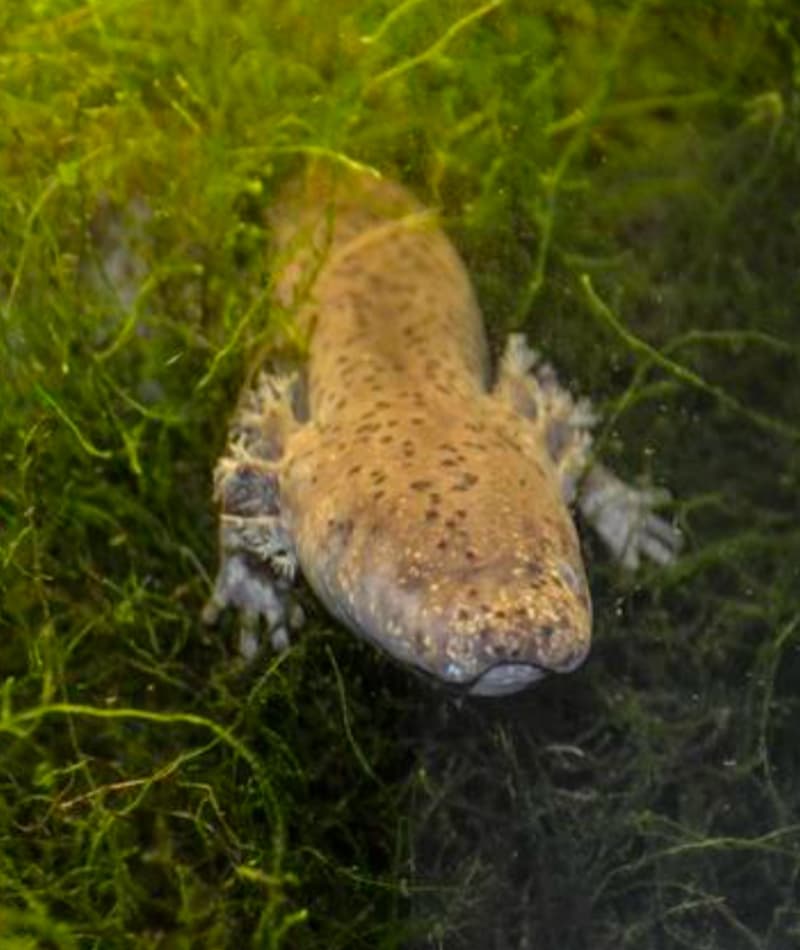
Western Lesser Siren
Siren intermedia nettingi
Did you know?
- They eat crayfish, snails, worms and aquatic insects.
- An adult can grow up to 20 inches long.
- They have no front teeth, sucking in water and prey like vacuum cleaners.
- To avoid freezing temperatures, they burrow deep underwater and brumates.
- A female can lay more than 1,500 eggs.
Mistaken Identity
At first glance, you may think this water-dwelling critter is an eel – but guess again! This is a siren, a type of salamander found only in the southern and central United States and northeastern Mexico. A siren has two tiny front legs, no hind legs and retains external gills throughout its life (unlike many amphibians, which lose their gills during metamorphosis).
Water Dweller
The western lesser siren spends most of its time in the water. During the day, it remains hidden under submerged roots or aquatic plants. At night, it comes out to search for food at the water bottom.
Threat Level
- Unknown
- Common
- Near Threatened
- Threatened
- Endangered
- Critically Endangered
- Extinct in the Wild
Common
The Western Lesser Siren is widespread and abundant.
Range
Alabama to central Texas, north in Mississippi Valley to Michigan
Habitat
Streams, lakes, ponds, swamps, ditches
We care about western lesser sirens
The Saint Louis Zoo supports western lesser sirens in the Charles H. Hoessle Herpetarium. Learn more about how we are helping wildlife around the world.
Find this animal in Historic Hill

SAINT LOUIS ZOO ZONE
Historic Hill
Historic Hill is a lovely stroll through one of the oldest parts of the Saint Louis Zoo. From the 1904 World’s Fair Flight Cage to the Spanish architectural flavor of the 1920s in the Bird House, Primate House and Herpetarium to the finishing touches of our thoroughly modern exhibits, this area of the Zoo has a unique ambiance and a nostalgic history that make it a great destination.

